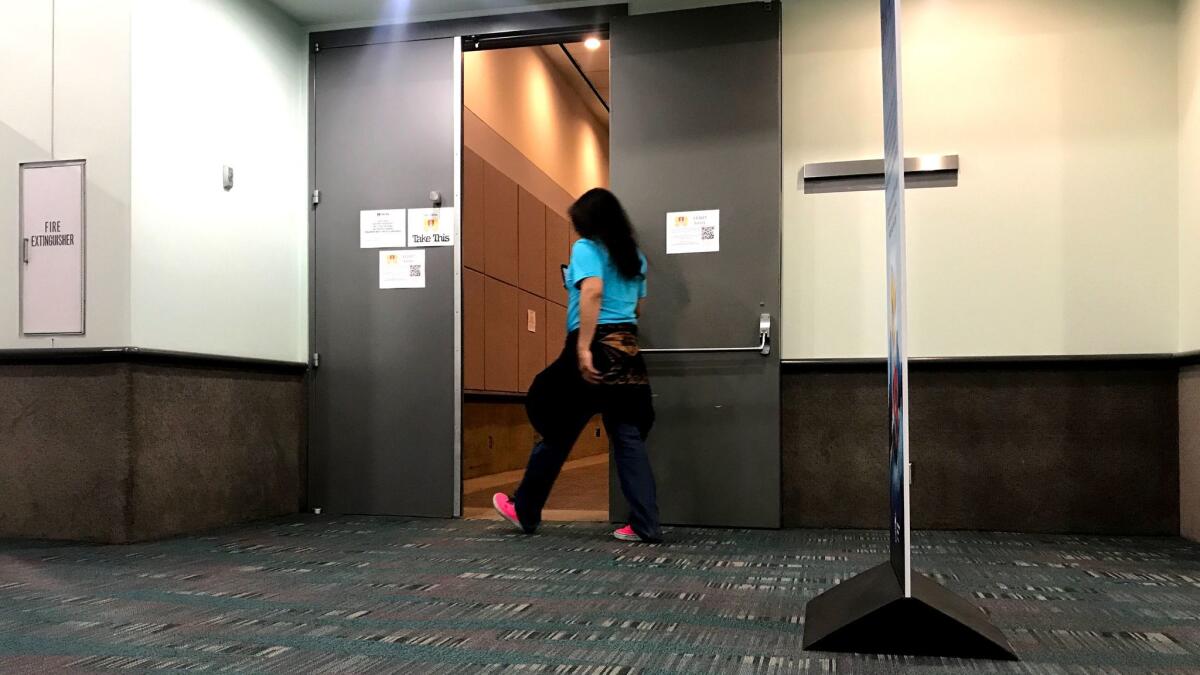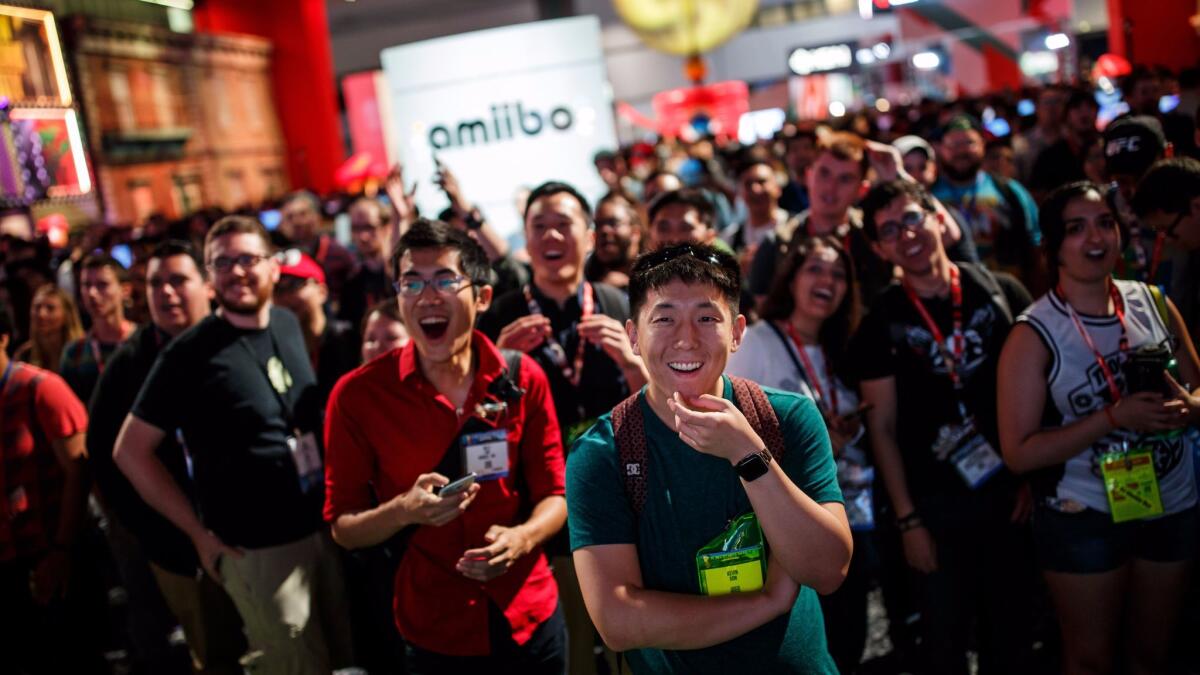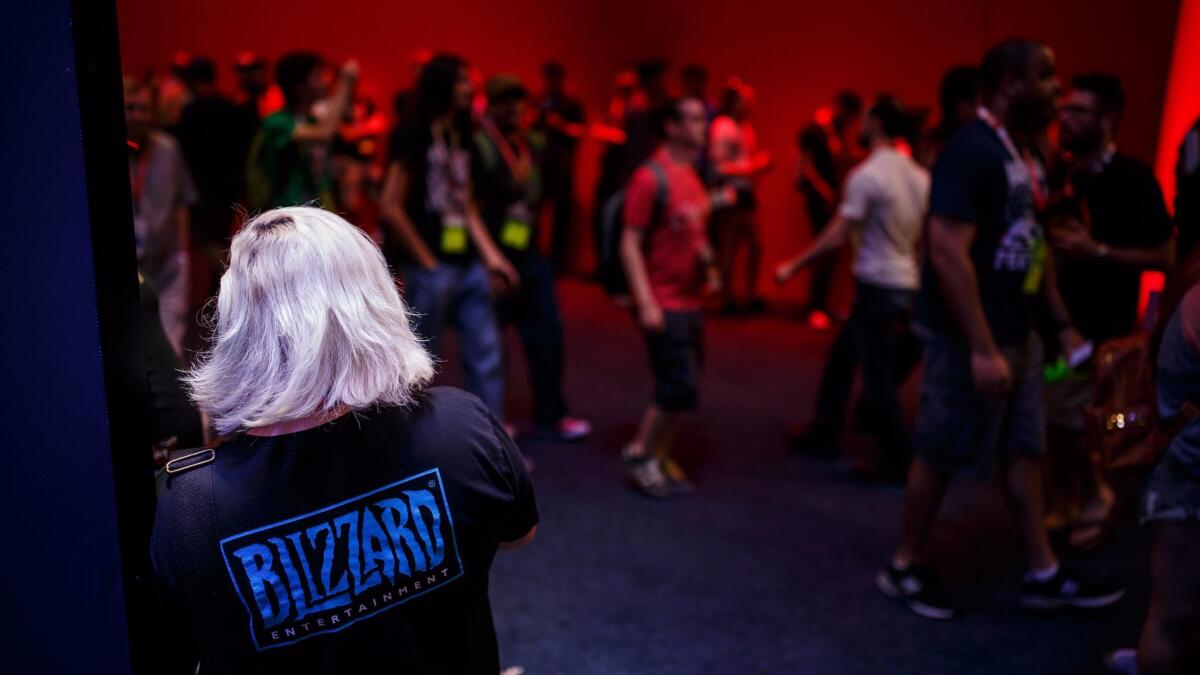Amid the madness of E3, thereâs a silent sanctuary for rest (and adult coloring books)

E3, the nationâs biggest video game convention, is a place of constant chatter and neon lights, punctuated by the sporadic boom of video game gunfire. Itâs a place where thousands elbow their way from booth to booth to try their hand at the hottest games, displayed on giant screens mounted on all sides.
Itâs not somewhere to go looking for peace and quiet.
But thatâs just what attendees found in the Away From Keyboard room.
The solitary space on the second floor of the Los Angeles Convention Center is nothing special to look at â and thatâs the point.
Inside, attendees of the Electronic Entertainment Expo lounge in near silence in cushioned chairs along the outer edges of the room. In a partitioned corner, a psychologist meets with anyone who needs to talk through any problems or just feels overwhelmed. The loudest noise is the scratching of pencil to paper (adult coloring books are provided free of charge). Some shut their eyes for a minute, or 30.
Itâs just what first-time E3 attendee Michel Sabbagh needed. The shouting and jostling of the conference crowd left him feeling âwoozy,â until he found his way to the Away From Keyboard room.
âThe atmosphere felt so soothing that I even took a nap there,â he said.

The room is staffed by volunteers and a psychologist from nonprofit Take This. Founded in 2013 by the friends of a gaming journalist who committed suicide, the organization â whose name stems from a well-known line in âThe Legend of Zeldaâ (âItâs dangerous to go alone. Take this.â) â works to de-stigmatize mental health issues in the gaming industry.
âThe people that come to the room run the gamut, some are just looking for a place to sleep, some are facing post-traumatic stress or anxiety and some just want to take a step back and reset before heading back out there,â said Pete Hines, a Take This board member.
This is the second year E3 has hosted an Away From Keyboard room, and traffic has grown in 2017, said Take This co-Executive Director Shannon Gerritzen. The organization also set up similar rooms at PAX, another gaming convention, and plans to expand to other events in the future.
With a total of 68,400 attendees over the three-day event, which concluded Thursday, even E3âs organizer acknowledges that it can be a bit overwhelming.

âItâs been an oasis without activity for people at E3, which is hard to come by at these industry events,â said Entertainment Software Assn. spokesman Rich Taylor.
But itâs not just E3. Gaming in general is an industry where rest can be hard to come by. A 2015 study by the International Game Developers Assn. found that 61% of video game developers say they worked at least 50 hours a week at least once in the last year. The high rate of turnovers and layoffs are also a frequent source of stress for video game developers.
âWe need to be more aware of mental and physical health within creative media,â said Kate Edwards, International Gamer Developers Assn. executive director. âThere is a constant drive to create and overwork and be in this crunch time and sometimes that needs to be tempered. Not everyone will notice [the room] but itâs important that itâs there.â
Tatjana Vejnovic, a contributing editor for gaming website the Koalition, said walking the jam-packed aisles of the industry conference left her unwell.
âFor the first time in over a year, I had an anxiety attack,â she said. âI couldnât get work done, I couldnât concentrate or do my job.â
The quiet room helped her cool down and calm down, without âa thousand fluorescent lights beaming at my eyes.â
âIt saved me, really,â she said.
The quiet room, though a sanctuary, does come with rules. There is no eating, photography, group gaming and loud conversations. Sleeping is also frowned upon.
âWe wonât kick you out if youâre so exhausted you need to rest your eyes, but we just donât want snoring or anything so we discourage napping,â said Gerritzen.






